I lay in the middle of a rutted-out trail in northern Bolivia as the cloud of dust from a hard third-gear crash settled on me like fine talcum powder. All my essential parts appeared to be attached and mobile, but I was fairly sure the impact of the bike on my right leg had broken something. I sighed, looked up at the clear blue sky and wondered how to deal with this little crisis more than 300 miles of dusty, hammered trail from medical help and nearly 5000 miles from my little house in St. Paul, Minnesota.Bolivia is one of those places that have slipped underneath the collective American consciousness. About the only near-universal American cultural reference comes from the movie Butch Cassidy and the Sundance Kid. The outlaws escaped to the country and were eventually killed at the hands of the Bolivian Army (although rumors abound that the pair survived).When I received the assignment to ride in this South American country, my off-the-cuff knowledge of the place wasn't much better than Butch's, so I bought a copy of Lonely Planet's fine travel guide, Bolivia. The book gave me a promising account of an amazing country that only a few travelers have had the good fortune to explore. The landlocked South American country has one of the world's most diverse climates, with the towering Andes mountains in the south and precious expanses of unspoiled Amazonian rain forest in the north. Unique fruits abound, and the Amazon jungle contains the richest density of species on the planet.The country is blessed with an abundance of places accessible only by serious off-road machinery. Juan Carlos, the owner of the largest chain of Honda dealerships in Bolivia, began a ride known as the Caravana in 1997, when he, his son Juan Carlos Jr. (Chavo) and five friends decided to see how far north they could ride on ATVs. They didn't reach their ultimate destination, a frontier town by the name of Cobija in the far north, but they had a great time and decided to do it again the next year. This time, Juan Carlos led the ride with 60 riders, and a national phenomenon was born.The Caravana has grown to the point where more than 100 riders now take part, and the event is a national celebration. Bolivian television broadcasts daily reports about the ride, and journalists from around the world come to participate. Each town the Caravana visits seems to make it a fiesta, and Pacena-the Budweiser of Bolivia-produces a commemorative beer can.The route for the 2002 ride went about 500 miles north, deep into the virgin rain forests near the Brazilian border. Total mileage was about 1000 during a 10-day ride that included overnight stays in some of the most remote towns in the world. Two nights were spent camping, and nine chase trucks, two airplanes and about 40 people provided support for the 120 riders.My crash came on only the second day of the Caravana, and we had not yet reached the rain forest. My right leg was tender, but I was able to limp through the rest of the day's ride to that night's destination, a remote lakeside hotel known as Los Lagos.At the hotel, I was attended to by the Caravana doctor, a chunky, smiling Bolivian who declared nothing was broken, gave me a shot in the butt in front of a crowd of snickering riders and hotel staff and then rubbed my ankle and leg with some kind of cream.When I asked what the cream was, he smiled and showed me the tube. It said, "Crema de Caballo. Por veterinario." Horse cream. For veterinarians.The doctor thought my horrified reaction extremely humorous.After all of this was complete, I hobbled back to my hotel room, eager to rest my leg for a few minutes. About 90 minutes later, the door to my cabana burst open and in came Chavo, who had become my friend and unofficial tour guide. "How are you feeling?" he asked.By this time, my leg sported enough exotic color to embarrass the local parrots. I had spent the past hour dashing to the bathroom-suffering from a rather severe case of food poisoning coupled with dysentery.Being from the Midwest, a land where stoicism is considered admirable (rather than lousy communication), my answer was a bit understated. "Oh, I'm feeling alright." "Did you take any painkillers?" Chavo asked. The doctor had offered white pills that appeared vaguely illegal and a neighbor had offered something definitely illegal, but I had declined both. "No, nothing." I said. "Good," Chavo said. "Then you can go piranha fishing with us." "Piranha fishing" meant cramming six of us into a narrow wooden boat equipped with a wheezing outboard that powered across a lake, through a jungle-shrouded stream packed with exotic birds, across another lake and down a tiny, mosquito-ridden stream.Thankful that my system had pretty much emptied back at the hotel, as the little boat's rocking had my stomach gurgling, I smiled weakly and declined when Chavo offered a beer. Had he known me better, he would have realized how truly sick I was feeling at that point. By the time we arrived, it was nearly dark. The guides threaded bloody chunks of beef on treble hooks, twirled the mess above their heads cowboy-style and hurled them into the creek in the hopes of bagging a piranha. "When we catch the piranha, we will use them as bait for surubi," Chavo said. "Surubi grow to more than 100 pounds out here."As we sat with our lines in our hands, slapping at mosquitoes, one of the guides told us of a day he and a couple of friends watched pavas-a South American bird the size of a turkey-dive into the water and not come out. After observing several of these odd events, they saw half of a pava surface. The bottom half had been eaten by piranhas, and the fish finished the top half under the fascinated gaze of our guide. "No swimming," the guide warned. "No kidding," I replied.Despite the proliferation of the little monsters, we only caught one piranha-too long after dark to use it for bait. We did catch some 10-pound surubi, several 35-pound generals (like flathead catfish, but more colorful) and a couple of corvina (they looked like a silvery bass). On the trip home, as we went down the small stream connecting the lakes, we shined flashlights on the banks, and dozens of red eyes glowed back at us. "Crocs," Chavo explained. "There are lots of them here."In fact, the Amazon rain forest is the most alive place you can imagine. One of the great joys of the '02 Caravana was the time I spent in the jungle. The plant life is a tangle of green palms, ferns and knobby, twisted trees growing out of a riot of low-lying flowers and grasses. Trees bloom in explosions of yellow, purple and white. Butterflies of every size, shape and color litter the trail, and gorgeous parrots and dozens of other birds dot the landscape.The brilliant colors of their environment have colored Amazonian creatures, even those we consider familiar. A small alligator that silently sat on the side of the road while I photographed it was a bright green-and-yellow rather than the leathery greens of its American and Australian brothers. A catfish we caught was a brilliant green rather than the dull gray of the startlingly ugly flatheads found in Midwestern river systems. The proliferation of birds, insects and reptiles also creates a constant cacophony of creaks, whistles, squeaks and screams. I became somewhat addicted to this assault of exotic life and kept stopping my machine just to let the sounds of the jungle tickle my soul. I was able to rejoin the Caravana after a few days of rest and more horse-cream rubs. Kawasaki had generously sent an '03 Prairie 650 ATV down for the ride, and it proved to be a wonderful machine. The suspension coddled my tender leg, which would not have withstood the pounding of a bike. A generous plastic box on the back held camping gear, extra water, a riding jacket and a change of clothes. Plus it made stopping to take photos or just ogle scenery much simpler.The riding is a joy by motorcycle, and you do make much better time than on the quads. If you get up early and are a capable off-road rider, you can avoid much of the dust simply by running with the leaders. This also means shorter days and getting into the hotel or camping spot earlier. If you are not in good riding condition or are more interested in scenery than motorcycle riding, a quad is an option worth considering. On the other hand, if you are a hard-core bike guy looking for the adventure of a lifetime, by all means, do the trip on two wheels.If you decide to make the trip on two wheels, you really need to wear a backpack or bring soft luggage to carry a change of clothes, a CamelBak or other water bladder, a bit of food and some tools. Bear in mind that the ride will entail six to eight days of more than 100 miles off-road. The '02 Caravana riding was not overly technical, yet all but a few days of open, straight road had enough twists and turns to hold my interest. The dust, which is thick and pervasive and hard to avoid with 120 riders on the route, can be an annoyance.Several days of the '02 ride were incredible, particularly on the return trip. Trails snaked through canopied jungle, twisting and turning and guaranteed to put a smile on your face. Log crossings over small streams and chasms broke up those rides, and one section featured a couple of miles of deep sand whoops that had me wishing for a bike. Another favorite stretch was rough road running through a scattering of trees and savannah. The trail was beat to hell, and riding it was much like riding the fifth moto of the day when the track is beat up just enough to be fun. Some did complain about this rougher terrain, but I loved it.Weather changes the ride tremendously. We saw a few tricky stretches of mud easily negotiated by an experienced rider. With a few days of rain, the terrain would have been transformed into a quagmire requiring winches for the ATVs and creating pure misery for the bikes. The most technical obstacles were the water crossings, which ranged from knee- to waist-deep.The biggest challenge of the Caravana is the mileage and time. Some long days of 200 or even 300 miles meant eight or 10 hours on a quad and six to eight on a bike. Although rest days are scheduled, heat, dust and challenging sections of trail take their toll. The ride is a test of stamina and will. The dust and traffic are the most dangerous parts of the trip, and on the seventh day, they took a toll of life for only the second time in Caravana history. One of the Caravana's longtime riders, Victor Espinoza, pulled into blinding dust to pass his friend's quad and met a heavy truck head-on. He was killed instantly. A memorial service was held that night, and the entire Caravana filled a giant Catholic church in Riberalta to honor this man's memory.The organizers of the Caravana work hard to make sure the experience goes beyond good riding, with stops at interesting places scheduled along the way. One of my favorites was a lunch stop at Cachuela Esperanza, a former rubber boomtown on the banks of the roaring Mamor River. The ruins of a giant rubber plant, an old steam train and a gorgeous French theater make for fascinating explorations. Some of the few locals who remain in the town caught dozens of yatorana (a local fish similar to lake trout) in the Mamor River, wrapped them in palm fronds and baked them for us. We squeezed locally grown orange-lemons over the fish and ate like kings. It was one of the best meals of the trip, and I had the privilege of sharing it with Gustito, a talking parrot who happily ate fish off my plate and imitated my laugh.Another stand-out stop came during our last night on the road, a camping night spent on a small farm known as Barranquilla. The road in is open only one month of the year, and access during the other 11 months is only by airplane. A cluster of maybe 15 buildings made up the tiny community, and a proliferation of pigs, ducks and chickens wandered noisily about the homestead.The locals grilled steaks and ribs for dinner, and the Caravana trucks had plenty of cold beer on ice. That evening, the party went on far into the night around roaring campfires. Stories were swapped, particularly about the wrecked airplane on the property. Apparently the plane had been carrying several passengers. One them complained of being ill and asked the pilot to land at Barranquilla. After he landed the plane, the passengers hijacked it and tied him up. The going theory is that on takeoff, the pilot was able to break free and a struggle ensued. Whatever happened onboard, shortly after takeoff the plane crashed pointing nearly straight down. Only bits and pieces of aluminum and an engine block driven six feet into the rock-hard Bolivian ground remain.That last day was one of the most beautiful rides of the Caravana. The path from the farm to a ferry was a treat. Juan Carlos explained that due to the route's remote location and limited time open, very few people, Bolivian or otherwise, traveled the road. One section was surreally idyllic, a perfect green plain set alongside a babbling little stream. The grass was smooth and short enough to be a putting green, and hundreds of wild horses grazed on it, with South American hawks wheeling in the skies above. The ferry crossing, we picked grapefruit (which are abundant in northern Bolivia), skinned them and cut off the tops so we could squeeze the juice out for a fresh drink. That refreshing drink was welcome, as the last day proved to be a long one. We logged more than 150 miles of bush terrain, and it was after dark by the time I rolled into Trinidad, our final destination. I came through town tired and beat, my leg throbbing (American doctors later found a broken fibula and a sprained ankle), my shoulders aching from wrestling the big 650 Kawi through the jungle and my whole body telling me it was time for a beer and a shower.Trinidad is a large town, with 80,000 people, and the somewhat complicated route through it to the finishing point was marked with MPs who snapped smartly to attention as we passed, pointing out the correct road with white-gloved hands and stopping traffic to let the Caravana pass. Red lights were of no concern-the Caravana had taken over the town.As I came upon the plaza, I could see crowds of people and hear music blaring from several blocks away. A powerful light system blasted daylight into the street. Local people filled the sidewalks and the plaza, and the street was jammed with Caravana riders and support crew. A 20-foot inflatable beer can towered over the scene. A local band played on the sidewalk, trying valiantly to overpower the loud music blaring from the speakers.I pulled into this crowd and was greeted by an announcer screaming my name over the sound system and a dozen Bolivians wrestling my helmet off to douse me in beer and congratulations. I was hugged, kissed and nearly drowned in Bolivian beer. It was like winning the Super Bowl. The ensuing hour was a melee. As each rider came in, they were treated to the beer baptism. People danced, sprayed beer, passed around a dead alligator, took photos and celebrated the end of a long, hard ride through this beautiful country with a wild, exuberant party.One of the women from the Caravana, Paola, came over to congratulate me when I came in. She gave me a hug and a kiss on the cheek and whispered in my ear, "Viva Bolivia." Viva Bolivia, indeed.
Latest
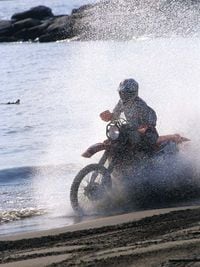
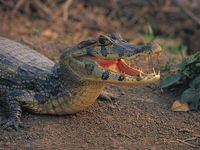
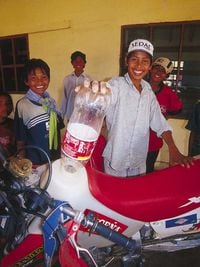

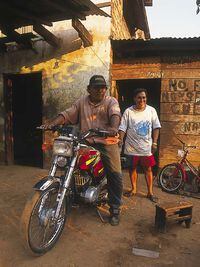

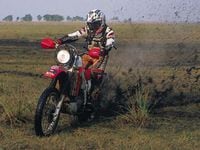
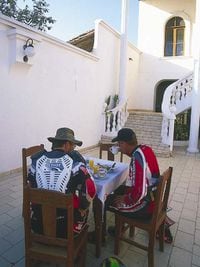
/cloudfront-us-east-1.images.arcpublishing.com/octane/JMCDU47IXNAABEK3HT7255TFSU.jpg)
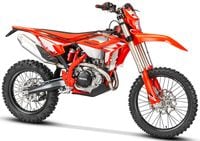
/cloudfront-us-east-1.images.arcpublishing.com/octane/ETCSEDWJV5BGXGHEZFINNZGLMA.jpg)
/cloudfront-us-east-1.images.arcpublishing.com/octane/MD56OW3SRRCBJFWV5F36BOZYUE.jpg)
/cloudfront-us-east-1.images.arcpublishing.com/octane/D3GB6FLJVVDDVCJPJR3ZG276DI.jpg)
/cloudfront-us-east-1.images.arcpublishing.com/octane/PXDBJAHBNFHIPIII2RETRYIHV4.jpg)
/cloudfront-us-east-1.images.arcpublishing.com/octane/IP7MOVDXWFCGJH5HQHH4T44UJI.jpg)
/cloudfront-us-east-1.images.arcpublishing.com/octane/Y4EZFRIEQRE7ZFINGRA2ONFGGQ.jpg)
/cloudfront-us-east-1.images.arcpublishing.com/octane/UIVE2WGHJRCGNLMDXYO2YR27PA.jpg)
/cloudfront-us-east-1.images.arcpublishing.com/octane/XVCN7KNMTFDHZMKMCH5DU5YZRU.jpg)
/cloudfront-us-east-1.images.arcpublishing.com/octane/DTPGQUZAIZAZNPRXG4V6QATIVM.jpg)
/cloudfront-us-east-1.images.arcpublishing.com/octane/Y7EYU3ZTTJFLZEA75REMWWBLSQ.jpg)
/cloudfront-us-east-1.images.arcpublishing.com/octane/TGSYZNI7UVEI7K7ULLVVQ324A4.jpg)
/cloudfront-us-east-1.images.arcpublishing.com/octane/XGKGRRHXPNDRBGPCV4FUAARLRE.jpg)
/cloudfront-us-east-1.images.arcpublishing.com/octane/4MNSJWN6UFEMTDQHVLM52C3X44.jpg)
/cloudfront-us-east-1.images.arcpublishing.com/octane/U6X2X4HGPNCYTNMPYOAN4IIJ5Q.jpg)
/cloudfront-us-east-1.images.arcpublishing.com/octane/B6ZIPVYSKVA3LHDJTGAEEMN4VM.jpg)
/cloudfront-us-east-1.images.arcpublishing.com/octane/I24MVSJBNZDALNIYUHHPVFWNZM.jpg)
/cloudfront-us-east-1.images.arcpublishing.com/octane/SIAXQ2ZOPNBYBLPKJPCHIYGG6A.jpg)
/cloudfront-us-east-1.images.arcpublishing.com/octane/2K6UXOH6I5E4HBKQVMPKA74RR4.jpg)
/cloudfront-us-east-1.images.arcpublishing.com/octane/B52ZU5WMNVF4FDYDONLARN26VU.jpg)
/cloudfront-us-east-1.images.arcpublishing.com/octane/7J4I2LIBRZB4DILKSLG54USBH4.jpg)
/cloudfront-us-east-1.images.arcpublishing.com/octane/LALZDRL5ORHUDGKA562HKNQQBM.jpg)
/cloudfront-us-east-1.images.arcpublishing.com/octane/4QSCGKH4JZACROBHROI55V6UBM.jpg)